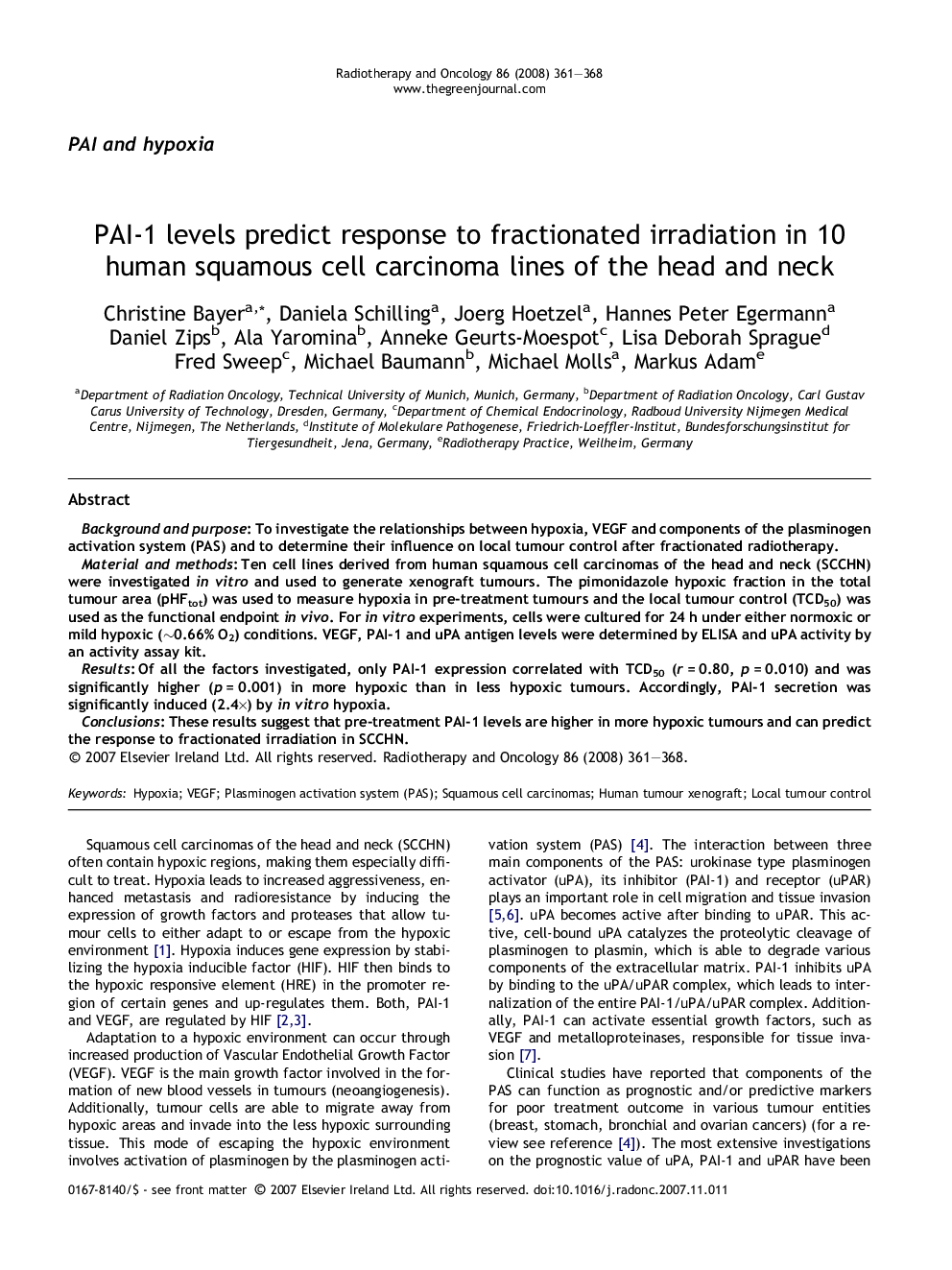| کد مقاله | کد نشریه | سال انتشار | مقاله انگلیسی | نسخه تمام متن |
|---|---|---|---|---|
| 2160636 | 1090890 | 2008 | 8 صفحه PDF | دانلود رایگان |

Background and purposeTo investigate the relationships between hypoxia, VEGF and components of the plasminogen activation system (PAS) and to determine their influence on local tumour control after fractionated radiotherapy.Material and methodsTen cell lines derived from human squamous cell carcinomas of the head and neck (SCCHN) were investigated in vitro and used to generate xenograft tumours. The pimonidazole hypoxic fraction in the total tumour area (pHFtot) was used to measure hypoxia in pre-treatment tumours and the local tumour control (TCD50) was used as the functional endpoint in vivo. For in vitro experiments, cells were cultured for 24 h under either normoxic or mild hypoxic (∼0.66% O2) conditions. VEGF, PAI-1 and uPA antigen levels were determined by ELISA and uPA activity by an activity assay kit.ResultsOf all the factors investigated, only PAI-1 expression correlated with TCD50 (r = 0.80, p = 0.010) and was significantly higher (p = 0.001) in more hypoxic than in less hypoxic tumours. Accordingly, PAI-1 secretion was significantly induced (2.4×) by in vitro hypoxia.ConclusionsThese results suggest that pre-treatment PAI-1 levels are higher in more hypoxic tumours and can predict the response to fractionated irradiation in SCCHN.
Journal: Radiotherapy and Oncology - Volume 86, Issue 3, March 2008, Pages 361–368